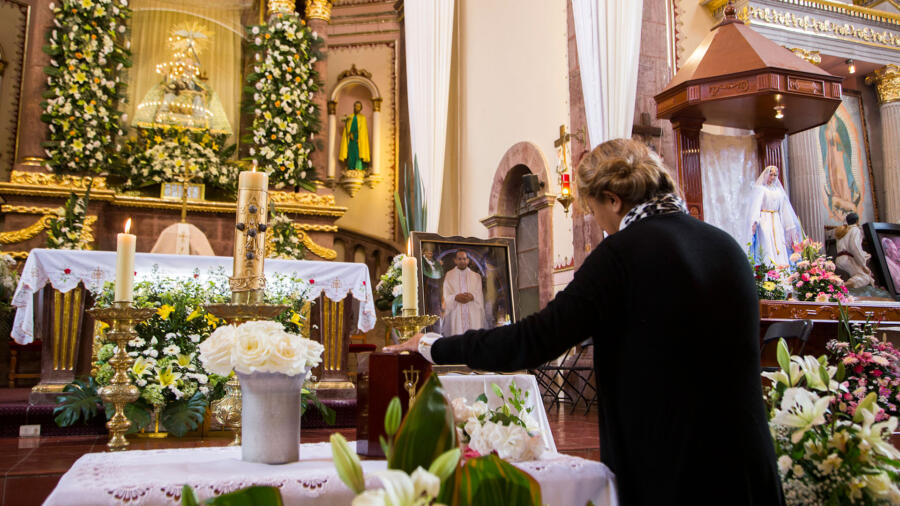Where the Cross Meets the Bullet
In a country where Catholicism runs deeper than its rivers, the last thing you expect to find at the altar is blood.
Yet in Mexico, the holiest of men and women—priests, nuns, and church workers—are being gunned down, stabbed, kidnapped, and tortured in what has become a terrifying and often overlooked crisis.
Since 2005, 47 clergy members have been murdered, making Mexico the deadliest country in the world for Catholic priests, surpassing even nations in the grip of civil war or religious extremism.
The killings are not just tragic—they’re symbolic, striking at the very heart of a society that has long seen the Church as untouchable. Today, the sanctuary has become a battlefield, and the shepherds of the faithful are now targets.
Sanctified but Not Safe: The New Targets of Organized Crime
According to Fides News Agency, the Vatican’s official mission society, Mexico has the highest clergy death toll on Earth. Even countries like Colombia (44 deaths), Brazil (28), and Nigeria (25) trail behind.
So what’s happening? Why are men and women of faith being hunted?
Father Sergio Omar Sotelo Aguilar, director of Mexico’s Catholic Multimedia Center, explains it bluntly:
“When you kill a priest, you’re not just taking a life. You’re destroying a symbol of peace, unity, and moral resistance. You destabilize entire communities.”
Cartels, desperate to tighten their grip on towns and territories, now view priests as obstacles, snitches, or threats. Why? Because these spiritual leaders:
- Shelter migrants
- Denounce corruption
- Refuse extortion payments
- Stand between crime and community
And when a priest speaks out? He disappears.
2018: The Bloodiest Year for the Church in Mexico
The year 2018 shattered all records. Seven priests were murdered—each death darker than the last.
- Father Germain Muñiz Garcia and Father Ivan Jaimes were ambushed and executed on a highway.
- Father Juan Miguel Contreras García was shot dead immediately after celebrating Mass.
- Father Rubén Alcántara Díaz was stabbed inside his own church in front of parishioners.
- Father Ícmar Arturo Orta was abducted, bound, tortured, and dumped like trash.
- Father Miguel Gerardo Flores Hernandez was discovered lifeless in a remote field.
- Father Moisés Fabila Reyes, age 83, was kidnapped and murdered despite his family paying over $100,000 in ransom.
Each case read like a chapter in a horror novel. But the message was real—and clear:
The Church is no longer off-limits.
A Political Pulse Beneath the Murders
The surge in priest killings hasn’t happened in a vacuum. The timeline aligns almost perfectly with Mexico’s volatile political shifts:
- Under President Felipe Calderón (2006–2012): 17 clergy murdered
- Under Enrique Peña Nieto (2012–2018): 26 killed
- Under President Andrés Manuel López Obrador: Violence dipped briefly during COVID lockdowns but remains dangerously high
Meanwhile, the national homicide rate soared to 27 per 100,000 in 2021—nearly five times higher than the U.S. Mexican authorities often promise reform. But 80% of priest murders remain unsolved, buried under files, fear, and corruption.
The Shadow State: When Law and Cartel Become One
The most disturbing layer? Collusion between criminal groups and the very police meant to protect the clergy.
“In many cases, the authorities are more interested in covering up than solving,” says Sotelo Aguilar.
Investigations are delayed. Evidence disappears. Witnesses are silenced. In some instances, local officials are the killers—or at least, their protectors.
No case illustrates this more than the 1993 assassination of Cardinal Juan Jesús Posadas Ocampo.
He was shot 14 times outside Guadalajara International Airport, in broad daylight. Authorities claimed mistaken identity—a hit intended for a cartel kingpin. But many, including his successor Cardinal Juan Sandoval Íñiguez, believe the truth was darker:
The hit was state-sanctioned.
Not Just Priests—But Pillars of Resistance
What the cartels understand—and fear—is that Catholic leaders in Mexico don’t just pray. They organize. They protect. They resist.
- They help migrants fleeing cartel territories.
- They shelter abuse victims, orphans, and the displaced.
- They stand between local communities and narco-governments.
To the criminals, priests are rebels in robes—moral figures with influence that bullets can’t silence.
Until, of course, they do.
But Still, the Bells Ring
Despite the danger, priests remain. They don’t flee. They don’t hide.
They keep preaching. They keep feeding. They keep resisting.
“The Church does not abandon her people,” says Father Sotelo Aguilar.
“Even when the cross becomes heavier.”
In countless pueblos and parishes across Mexico, mass still begins at dawn. Bells still chime through humid air. Choirs still sing. The faithful still gather, even as fear sits in the pews beside them.
FAQs
Why is Mexico the deadliest place for Catholic priests?
Because priests often oppose criminal organizations—by denouncing crime, helping the vulnerable, and refusing extortion. This makes them targets for cartels and corrupt politicians.
How many clergy have been murdered in Mexico since 2005?
At least 47 priests, nuns, and pastoral workers have been murdered, according to Fides News Agency.
What happened in 2018?
2018 was the deadliest year, with seven Catholic priests murdered, including cases of execution-style killings, abductions, and torture.
Are Mexican authorities solving these murders?
No. Over 80% remain unsolved, and many cases are hindered by corruption and police involvement with criminal organizations.
Is the Church leaving high-risk areas?
No. Despite the threats, most clergy remain, continuing their work and often becoming the only barrier between communities and cartel violence.

